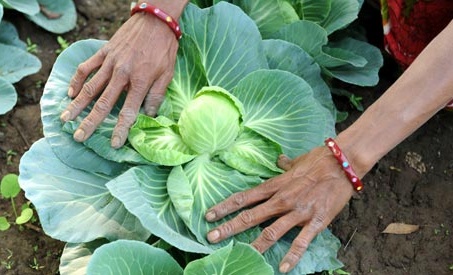Ankita Rao writes: With the introduction of chemicals such as urea, phosphate and pesticides as well as new farming technologies and irrigation systems, this fertile northern Indian state quickly became the seat of the country’s agricultural revolution in the 1970s and 1980s. And farmers like Singh, now a vibrant 69-year-old with a snow white beard, started to see their harvests multiply.
But alongside this burst of prosperity came the harrowing side effects of pouring chemicals into the ground: People’s health deteriorated rapidly, as did water and soil quality, and neither the government nor consumers took action. In the past decade, however, farmers like Singh have taken matters into their own hands and returned to the chemical-free, organic farming practices they used before fertilizers showed up.
Punjab now has approximately 1,500 hectares of certified organic land, and India has emerged as a global leader in organic farming, with 600,000 certified producers. The countries with the second- and third-largest outputs are Uganda and Mexico,
Motivated by growing international demand, the Indian government has encouraged the shift toward organic.
At the beginning of 2013 the government launched a nationwide organic certification program to help India increase its organic exports. During the year, organic exports rose 7.73 percent, and the country produced 1.24 million metric tons of organic produce.
While government interest in organic is largely market driven, for independent farmers in Punjab, the choice is about more than the economics; it’s about grappling with the legacy of the Green Revolution, an agricultural overhaul that began in the 1940s and reached the state more than 50 years ago.
India’s Green Revolution began in 1967, when then–Prime Minister Indira Gandhi took 18,000 tons of hybrid Mexican wheat seeds to Punjab. At the time, starvation plagued much of the country, and the introduction of high-yield seeds and chemical fertilizers resulted in a massive increase in the production of wheat, rice and pulse. India produced 50.8 million tons of food grain in 1950; by 1990, that output jumped to 176.3 million tons, creating a surplus.
But the Green Revolution also brought a host of problems. Rice fields, introduced in Punjab during the overhaul, required heavy irrigation and threatened the state’s water supply. Farmers poured dangerously high levels of government-subsidized phosphate and urea into the soil and water to grow more food.
Punjab’s public health crisis became public knowledge in the 1990s after the discovery of toxic chemicals in the state’s soil and waterways. The region now has the highest cancer rate in the country, and J.S. Thakur, a researcher at the Post Graduate Institute of Medical Education and Research in Chandigahrh, has linked these chemicals to premature aging, skeletal issues and threats to children’s health. Organic farming may be a requirement now.

